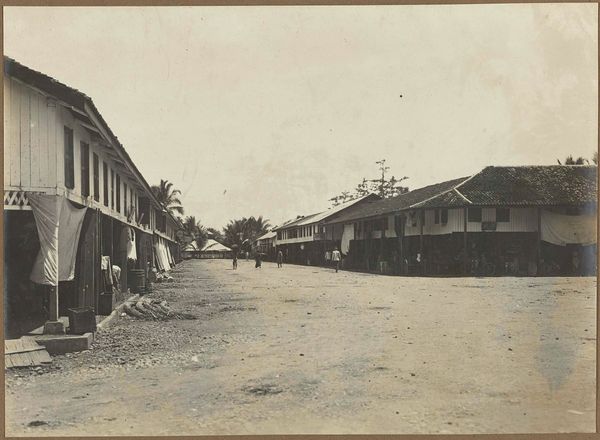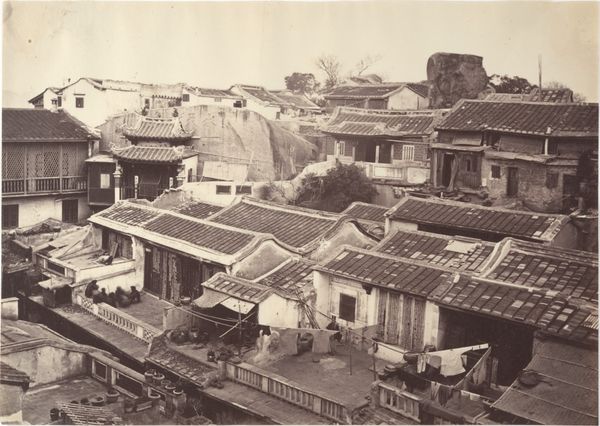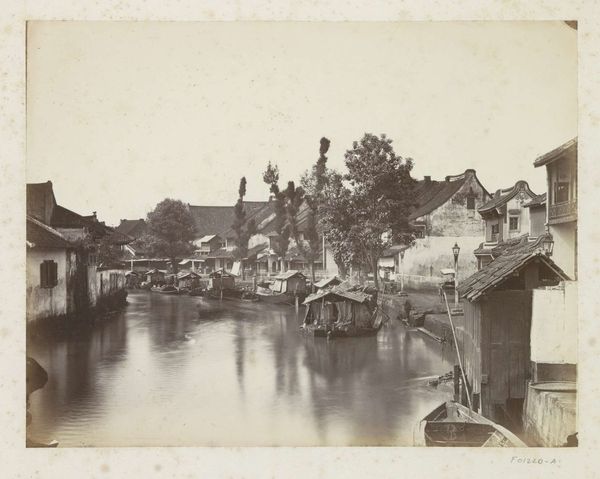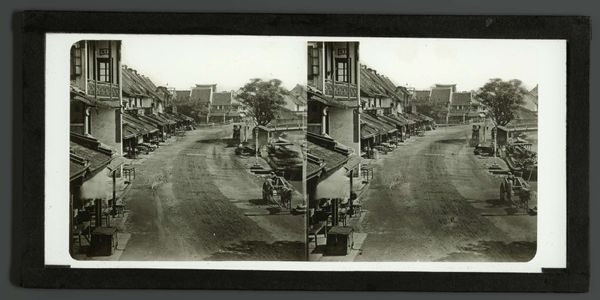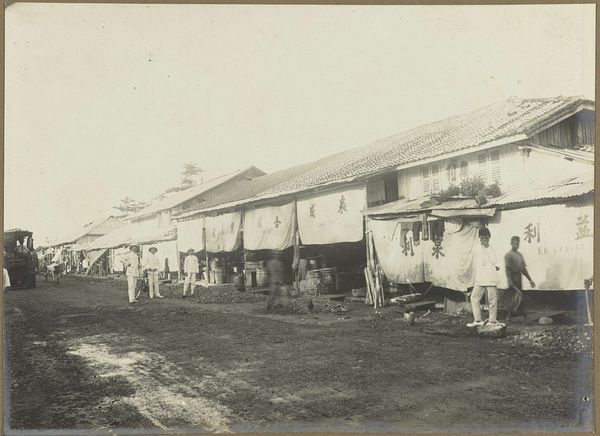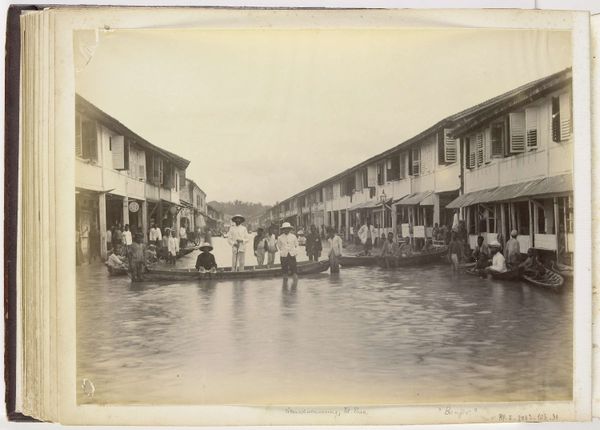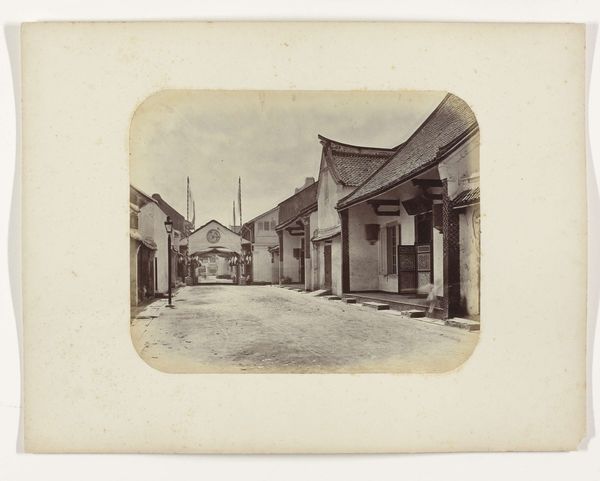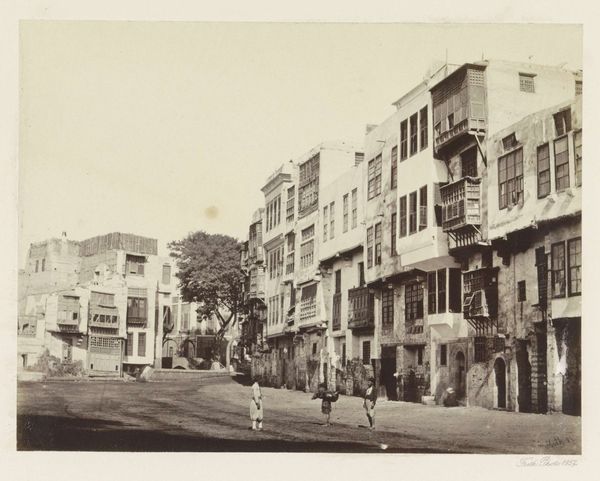
print, photography, architecture
#
black and white photography
# print
#
asian-art
#
landscape
#
historic architecture
#
photography
#
historical photography
#
monochrome photography
#
cityscape
#
architecture
#
historical building
#
monochrome
Dimensions: height 17 cm, width 23 cm
Copyright: Rijks Museum: Open Domain
Curator: Looking at this image, I'm immediately struck by how effectively it captures a sense of both serenity and decay. The reflections in the water create this beautiful, almost dreamlike quality, while the wear and tear on the buildings tells a different story. Editor: Indeed. This print, titled "Chinese huizen in Batavia," was produced around 1900. The photographic medium, coupled with the subject matter, gives us a fascinating glimpse into the urban landscape and social dynamics of Batavia, now Jakarta, at the turn of the century. It would be held in the collection of the Oudheidkundige Dienst, or Archaeological Service. Curator: It's fascinating to consider the materiality of these buildings, how they were constructed to literally be on top of the river, with these visible supports underneath. Were the builders of these dwellings also inhabiting the land or water through some claim of work performed? Who benefits from them being built this way and what kinds of materials were accessible in order to allow such development to happen in this way? Editor: Excellent questions. The architecture reflects a specific socio-political context, namely the Chinese community within a colonial Dutch city. We need to examine how these structures, and the visual representation of them, served both practical purposes, such as trade and housing, and also as expressions of cultural identity and perhaps, even resistance, under Dutch rule. Think about who controlled access to resources and land. Curator: Right. How much did class dictate which spaces and materials were granted for use. And I wonder about the environmental impact: was there any understanding of the long-term effects of building over the water like this? Editor: What the Oudheidkundige Dienst chose to photograph, how it was documented, circulated, and understood then—and now—speaks volumes about how we construct historical narratives. Curator: Absolutely. The act of photographing, processing, printing... each stage involving labor, skill, and the potential for manipulation of narratives. Editor: This image allows us to ponder not just what we see, but *how* we see, through the lenses of history, power, and representation. Curator: And for me, considering it now is a sobering reminder that images can be both documentary and deeply ideological at the same time.
Comments
No comments
Be the first to comment and join the conversation on the ultimate creative platform.


